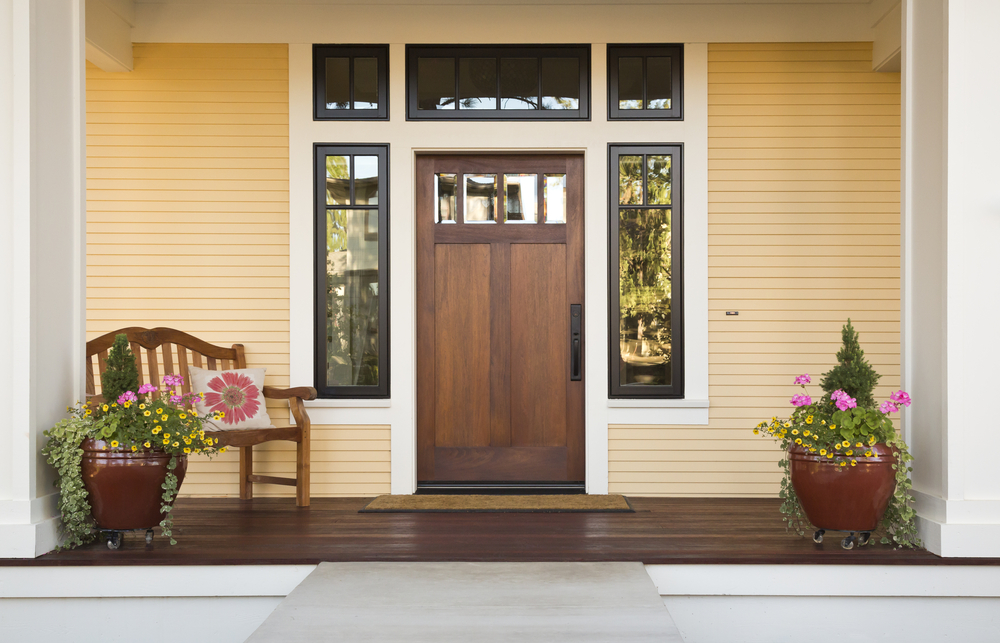 As the cool weather approaches over these next few months, it’s time to start thinking about how you can save on heating costs. One simple and energy-efficient method is to winterize all the doors and windows throughout your home. This is important so that cold air doesn’t leak insideand warm air stays inside.
As the cool weather approaches over these next few months, it’s time to start thinking about how you can save on heating costs. One simple and energy-efficient method is to winterize all the doors and windows throughout your home. This is important so that cold air doesn’t leak insideand warm air stays inside.
You don’t have to replace your doors and windows to be fully winterized. Instead, turn this preparation project into a DIY weekend task. The following tasks can be done in a reasonable amount of time. And it will reduce how much you spend on utilities during those long winter months.
Insulate First and Foremost
Drafts can enter a house through gaps around the windows and doors, thanks to an often thin barrier that separates interior warmth from exterior cold. Build It Solar estimates that between 15 and 35 percent of winter heat-loss in the U.S. is due to poor insulation. So insulation is a crucial task to start with. With the right insulation, you create a foundation for an energy-efficient home.
“Temperature changes travel through dense materials faster than air. When the heat, or lack thereof, hits one side of the wood, glass, or metal, the temperature is transferred rapidly through each molecule until it hits the other side. With air space given by insulation or panels with sealed air spaces between them, temperature fluctuations are slowed and managed,” according to the guide, Critiquing Your Doors and Windows for Oncoming Winter.
Window insulation film and panels are the most effective options for keeping cool air out.
Both are affordable and installation is simple.
Apply Window Caulking
Caulk is a rubber, foam, silicone or resin based material that fills in spaces around the window frame, making it airtight and resistant to drafts. The optimal conditions for application are in warm, dry temperatures with low humidity to ensure the caulk adheres and doesn’t swell from moisture, making this a perfect early fall project.
The U.S. Department of Energy website recommends cleaning the window and frames before caulking to remove any paint, old caulk and other debris. Wait until the area has dried completely, hold the caulking gun at a 45-degree angle to penetrate into all gaps, and inject the caulking in one continuous line for the most effective defense layer.
Weatherstrip the Doors
Weatherstripping uses the same concept as caulking, but is intended for doors in particular, and could save 10–15 percent on energy costs according to This Old House. A weatherstrip is adhesive tape that comes in a variety of materials such as plastic, magnet, foam, metal, rubber, felt or vinyl, allowing you to choose the best option for your current doors.
Felt, plastic and foam are the cheapest, while rubber, metal, vinyl and magnet are more expensive. Regardless of the materiel, all weatherstrips can be installed by hand on the top, bottom and sides of each door. To maximize the coverage and protection of the weatherstrip, reinforce it with nails after the application. This will allow it to remain flush against the gaps.
Winterize Garage Door and Windows
Finally, remember the windows and doors in your garage, which are especially vulnerable to the cold winter weather. Especially when it comes to the potential damage cold weather can do the materials.
“Snow means dropped temperatures, frost and slippery surfaces. Metals tend to contract when temperatures reach freezing levels. Make sure you check on the screws, springs and garage door rollers regularly,” explains Major Seasonal Garage Repairs to Remember.
The same tactics of caulking and using window insulation and draft stoppers will work with garage windows to reduce drafts. Loose screws and door rollers can leave gaps along the door, so be sure to secure those this fall, checking them throughout the winter as well.
Enjoy The New Season
This winter season, don’t resign yourself to a cold, drafty home. Prepare your windows and doors now to keep costs down and heat inside your home, where it belongs. Don’t forget about the garage. Your garage may also need initial and on-going maintenance to reduce drafts and potential damage.
BIO: Maile Proctor is a blogger and freelance editor. She writes about health and fitness, lifestyle and home security. She’s written for Lodgify, AllConnect, ApartmentGuide and more. Proctor earned her bachelor’s in broadcast journalism from Chapman University. When she’s not writing, she enjoys hiking in San Diego, California.

